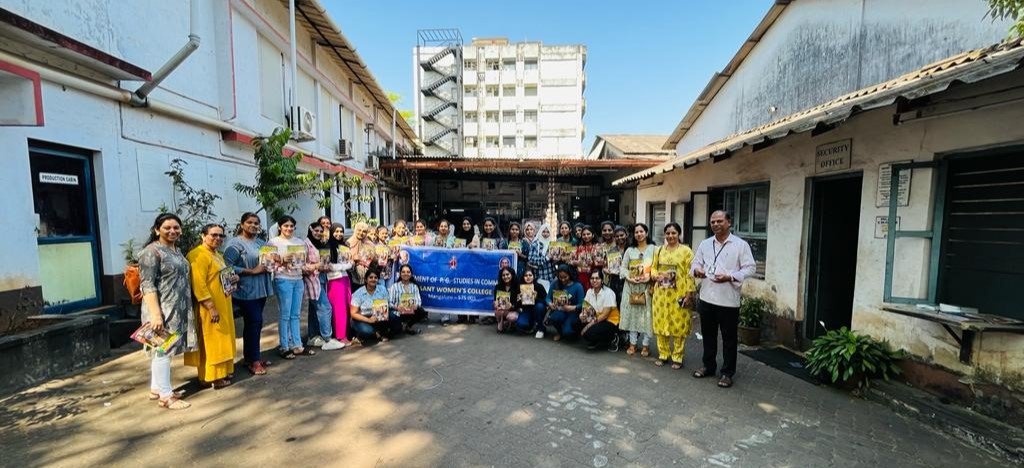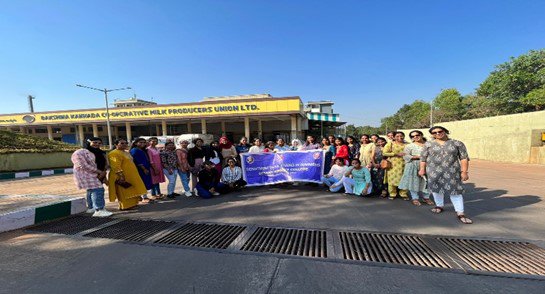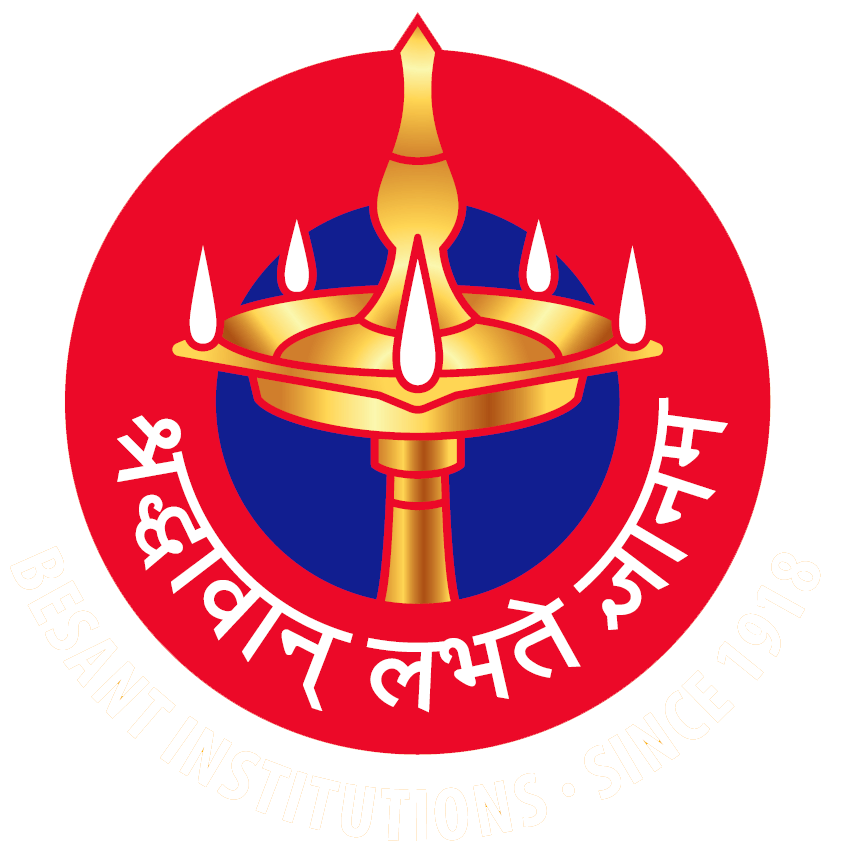Industrial Visit : Dept. of PG Studies in Commerce
A man starts off his/her day by picking up newspaper and milk packets lying on the doorstep. This industrial visit we were excited and curious to know the entire process that gets these two essential commodities at our doorstep. To pacify our eagerness our facilitators along with the students of final year organised an industrial visit to the Manipal Press followed by KMF Nandini, Brahmavara on 15th February, 2023.
We reached Manipal Press at 10 a.m. and were received by Mr. Shanbagh. In the quadrangle of the press Mr. Shanbagh began explaining about how they started off with printing Udayavani newspaper, weekly magazine Taranga, fortnightly magazine tushara followed by text books printing for schools. We were also told how the news from various branches reach the press, how does segregation of news happen, how columns are determined and the like. We were then taken to the production site wherein we got to know that only four colours are used in printing and a combination of these colors when mixed in proper proportion will result in outcome of desired colour. The news is first printed on an aluminium sheet and then printed on a paper. The aluminium sheets can be used only once and after the usage they are recycled. The person incharge also demonstrated how the news is printed on the sheets and how are they transferred on to the paper. The new machine with greater capacity has been imported from Germany and is connected to the old machine. This has made printing possible at faster pace. When the printing began, we were taken aback by the process and pace at which the printed pages of a text book were getting ready.
The press prints one of the most trusted daily newspapers of Karnataka named “Udayavani”. The newspaper dates back to 1970 and is been widely read not only by Kannadigas but also by people who have migrated from Karnataka. The Newspaper, the Press, the Chief Editor and the management have been accoladed with prestigious awards which illustrates the hard work and dedication of the team in the field of journalism.
It was indeed a very fruitful and an insightful session. On our return we were handed over with their weekly magazine Taranga and fortnightly magazine Tushara. The entire process took almost an hour and we left the place with content and full of information.

After a fruitful session at the Press, we moved towards Dakshina Kannada Co-operative Milk Producers Union Ltd, Brahmavara, Udupi.
India is world’s largest producer of milk with 22% of global production. After Anand Milk Union Limited (AMUL) which is located in Gujarat, Karnataka Milk Federation (KMF) grabs 2nd highest position in dairy co-operatives. With an aim to empower local farmers Ministry of co-operation, Government of Karnataka had established KMF in 1974. Under the trade name “Nandini”, KMF produces milk and its byproducts which includes curd, ghee, butter, cheese, milk powder, sweets, chocolates, ice-cream and frozen desserts.
The head office of this cooperative union is located in Kulshekhara, Mangalore. When we entered the Union, the staff in charge gave us a warm welcome and briefed us about functioning of KMF.
We were thrilled to know the colors of milk packet indicated variation in fat content that the red milk packet is sold at a higher price for the reason being it contains 4.2% of fat which is high compared to other packets. The green packet contains 3.6% of fat and blue packet contains 3.2% of fat. Nandini also sells yellow packets that is not known to many. Yellow packet is meant for people who are “Lactose Intolerant” (unable to fully digest the sugar in the milk). Hence, lactose content will be removed and supplied in yellow packs and to manufacture this KMF has incorporated a separate machine. The pasteurisation helps to kill harmful pathogenic bacteria which is naturally found in the raw milk. In the pasteurization process the heat treatment of milk is done between 72 to 75 degrees Celsius.
The staff in charge also informed us as to how the farmers around Udupi are benefited and also how do they deliver the milk to KMF. He also demonstrated how Lactometer (it is an instrument which will gives accurate reading with regard to finding purity of the milk) is used to study the purity of milk before the distribution is done. KMF has a machinery in place to generate steam. It makes use of woodfire that helps in boiling the milk (It is located separately from the main plant). KMF is well known for its Ghee Mysore Pak, Doodh Peda, Flavoured milk along with its by-products of Milk i.e., ghee, paneer, butter and butter milk. The staff in charge Enlighted us on preparation of ghee and also took us into the freezer where tonnes of milk packets were stored in containers under 4 degrees Celsius.
The production of milk is a continuous process without compromise in the hygiene and quality and KMF upholds this motive as it ranks second among the dairy co-operatives in the country after AMUL. Our overall experience in connection to industrial visit was informative, fun filled and exhilarating.

